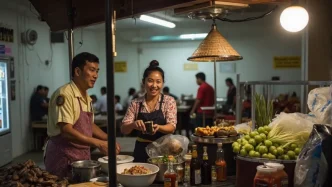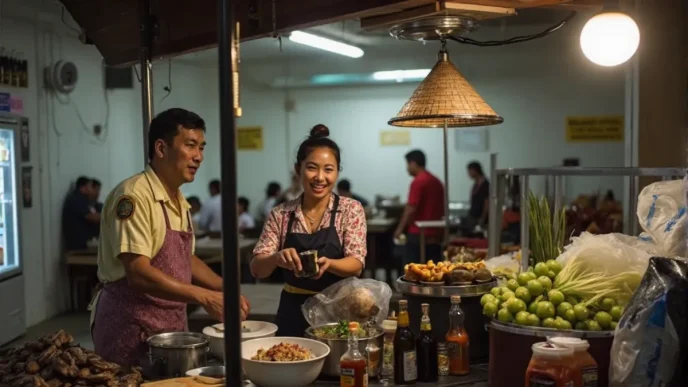A catastrophic 7.7 magnitude earthquake struck central Myanmar on March 28, 2025, leaving a trail of destruction near the historic city of Mandalay. With a death toll already surpassing 2,000 and over 3,000 injured, experts warn that the number of casualties could climb into the tens of thousands as rescue efforts struggle against the dual challenges of ongoing aftershocks and a brutal civil war. The disaster, centered along the Sagaing Fault, has razed vulnerable infrastructure and disrupted an already fractured nation, raising urgent questions about humanitarian aid and long-term recovery in a region gripped by conflict.
Devastation at the Epicenter
The earthquake, one of the most powerful to hit Myanmar in decades, originated at a shallow depth of just 10 kilometers, intensifying the ground shaking that devastated Mandalay and surrounding areas. Dr. Rebecca Bell, a tectonics expert from Imperial College London, explained to international media that the quake’s “strike-slip” motion—similar to that of California’s San Andreas Fault—combined with its shallow origin, amplified its destructive force. “This kind of seismic event, so close to the surface, can cause catastrophic damage to buildings, especially in areas with poor construction standards” she noted.
Mandalay, a cultural and economic hub, bore the brunt of the disaster. Images of the damaged Mandalay Palace, a symbol of the city’s heritage, captured the scale of destruction as survivors navigated rubble-strewn streets. Dr. Ian Watkinson from Royal Holloway, University of London, highlighted the vulnerability of the region’s rapid urbanization, with many high-rise concrete buildings constructed on the floodplains of the Ayeyarwady River. “These structures are ill-equipped to withstand such intense seismic activity” he warned, pointing to the potential for further collapses as aftershocks continue.
The quake’s impact extended far beyond Myanmar’s borders, with tremors felt nearly 1,000 kilometers away in Bangkok, where a building under construction collapsed. Experts attribute this to the Thai capital’s “soft soils,” which can amplify ground motion, according to Dr. Roberto Gentile of University College London. The incident has prompted safety evacuations and heightened scrutiny of building regulations in the region.
Geological and Historical Context
Myanmar sits at the volatile intersection of the Indian and Eurasian tectonic plates, a geological hotspot that has fueled seismic activity for centuries. The Sagaing Fault, which runs through central Myanmar, is a major tectonic structure responsible for the recent quake. Jess Phoenix, a geologist speaking to international outlets, likened the energy release of the 7.7 magnitude event to “334 atomic bombs,” underscoring the immense destructive potential. She added that aftershocks could pose a significant threat for months, further endangering survivors and weakened infrastructure.
Dr. Brian Baptie of the British Geological Survey noted Myanmar’s long history of powerful earthquakes, warning that densely populated areas with aging or substandard buildings face disastrous consequences. Professor Ian Main from the University of Edinburgh cited the USGS’s PAGER forecast, which estimates fatalities could range between 10,000 and 100,000—a grim projection as rescue teams struggle to access remote areas. “The enforcement of building codes in Myanmar has been inconsistent at best” Main observed, raising concerns about the nation’s preparedness for such events.
Humanitarian Crisis Compounded by Conflict
The earthquake’s toll is not merely a matter of physical destruction; it has exacerbated an already dire humanitarian situation in Myanmar. Since the military coup in 2021, the country has been mired in a civil war that has devastated its economy, disrupted communication networks, and displaced millions. Professor Ilan Kelman of University College London emphasized the political barriers to delivering aid, pointing to the military government’s history of restricting access for international relief organizations. “Effective disaster response requires coordination and trust, both of which are in short supply in Myanmar right now” he said.
Relief efforts are further complicated by the ongoing conflict, which has hindered accurate assessments of the disaster’s full impact. As of April 1, 2025, official figures report over 2,000 deaths, but experts like Professor Bill McGuire of UCL predict a significant rise in casualties as more information emerges from isolated regions. “Myanmar is one of the most seismically active countries in the world, and this event may prove to be one of its deadliest” McGuire cautioned.
International response has been swift but faces logistical hurdles. China has already deployed teams that rescued six individuals in quake-hit areas, while Vietnam, Indonesia, and the Philippines have sent or are preparing rescue and medical units to assist in Mandalay and beyond. In Thailand, authorities are intensifying searches for survivors after buildings swayed during the initial quake and subsequent aftershocks. Yet, the fear of further tremors has forced many, including hospital patients in Myanmar, to seek refuge in open spaces like car parks, adding to the chaos.
Aftershocks and Infrastructure Risks
The threat of aftershocks looms large over recovery efforts. Geologists warn that these secondary quakes could destabilize already weakened structures, particularly in urban centers like Mandalay. Many buildings, constructed without adherence to seismic-resistant standards, are at risk of collapse, endangering both survivors and rescue teams. Professor McGuire stressed the urgency of humanitarian relief, noting that “every hour counts in preventing further loss of life.”
In Bangkok, aftershocks have triggered evacuations and prompted a reevaluation of construction safety protocols. The collapse of a building under construction during the initial quake has heightened public anxiety, with calls for stricter oversight of urban development projects on the city’s soft soils. Dr. Gentile’s analysis of ground motion amplification underscores the need for regional cooperation in updating building codes to mitigate future risks.
Challenges of Aid Delivery in a War Zone
Delivering aid in Myanmar’s conflict-ridden landscape presents unique challenges. The civil war has fragmented the country, with various ethnic armed groups and the military junta vying for control over territory and resources. Communication systems, already crippled by years of fighting, have been further disrupted by the earthquake, making it difficult to coordinate rescue operations or assess needs in remote areas. Entire communities remain cut off, with reports of survivors trapped under rubble in villages along the Sagaing Fault.
Professor Kelman highlighted the importance of robust planning regulations and community resilience in disaster-prone regions. However, in Myanmar, where political instability has undermined governance, such measures are often absent. International aid organizations face the added challenge of navigating military checkpoints and securing safe passage for supplies. The government’s declaration of a week of mourning reflects the scale of the tragedy, but it offers little in the way of practical solutions for those in desperate need.
A Region on Edge
As rescue operations intensify across Myanmar and neighboring Thailand, the region remains on edge. Families search for missing loved ones, while hospitals overflow with the injured. The psychological toll of the disaster, compounded by the fear of aftershocks, is palpable. In Mandalay, the sight of a Buddhist monk walking past the damaged Mandalay Palace at sunset—captured in haunting photographs—serves as a poignant reminder of the cultural and human losses endured.
Looking ahead, the road to recovery appears daunting. Rebuilding infrastructure in a seismically active zone requires not only financial resources but also political will—both of which are in short supply in Myanmar. The international community’s response will be critical, yet questions linger about how aid can reach those most in need amidst ongoing violence. As the ground continues to tremble with aftershocks, the resilience of Myanmar’s people is tested like never before, leaving the world to watch and wonder how this beleaguered nation will emerge from yet another crisis.














